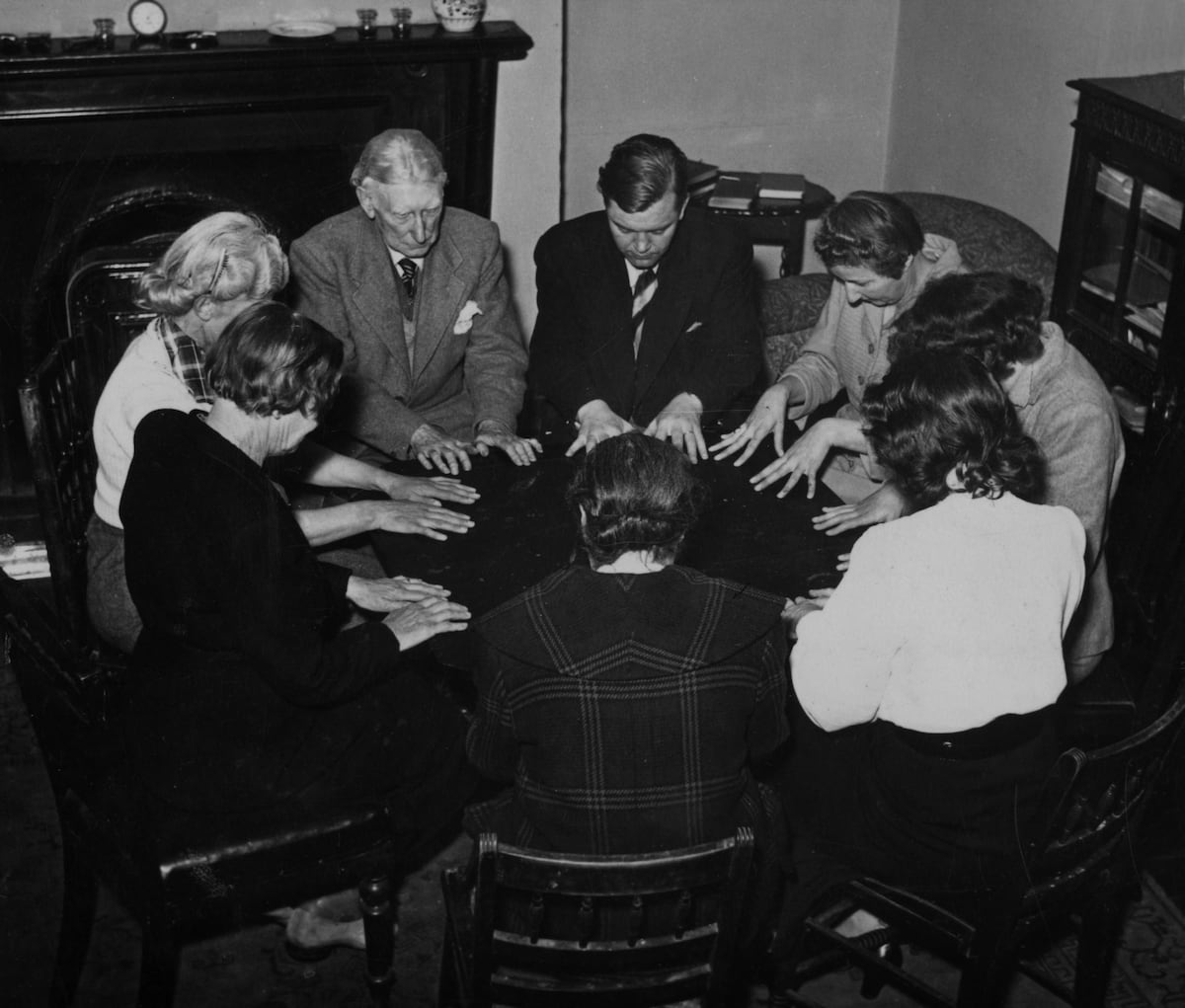World
Séances Surge as Families Seek Comfort After World War I

The aftermath of World War I saw a significant rise in the popularity of séances as families sought to reconnect with loved ones lost in the brutal conflict. One notable case involved Raymond Lodge, a British soldier who died at the age of 26 in September 1915 during combat in Ypres, France. Shortly after his death, his father, Sir Oliver Lodge, a respected physicist and member of the Society for Psychical Research, received messages from Raymond through the medium Mrs. Osborne Leonard.
Raymond’s messages reportedly included a haunting declaration: “TELL FATHER I HAVE MET SOME FRIENDS OF HIS.” This connection to the deceased, especially notable figures like F.W.H. Myers, a founding member of the Society who had passed away in 1901, captivated Sir Oliver. His engagement with spiritualism, initially marked by skepticism, deepened as he participated in numerous séances with Mrs. Leonard. The insights from these sessions culminated in the publication of the book, “Raymond, or Life and Death,” in 1916. The book gained immense popularity, reaching soldiers on the front lines who sought solace in its pages.
Spiritualism’s Resurgence and Cultural Impact
The roots of spiritualism trace back to the late 1840s, emerging as a pseudo-Christian practice believing in the possibility of communicating with the deceased. While interest waned before the war, the profound loss experienced during World War I rekindled public fascination with the afterlife. The staggering toll of nearly 9 million soldiers killed left families grappling with unprecedented grief, as many young men perished before their time.
Following the success of Sir Oliver’s work, numerous publications emerged, echoing similar sentiments of comfort and connection. “Claude’s Book,” published in 1919, was one such example, purportedly transcribed from séances held by the mother of a young soldier named Claude. L. Kelway-Bamber, inspired by Sir Oliver’s experiences, sought out Mrs. Leonard to connect with her son, reflecting the widespread desire to find peace amid overwhelming loss.
While modern perspectives often dismiss these séances as mere exploitation of grief by frauds, understanding their cultural significance requires a nuanced examination. The sheer scale of loss during and after the war meant that families were not only mourning individual loved ones but were part of a collective tragedy. Each family’s sorrow was unique, yet the omnipresence of death diminished the individual significance of each loss, leading many to seek affirmation of their loved ones’ existence beyond the grave.
The emotional resonance of Raymond Lodge’s story served as a rallying point for grieving families. His name became synonymous with the hope of connection, allowing others to feel that their own sons, brothers, and husbands were equally special. This need for recognition and validation can be seen as a driving force behind the increased interest in spiritualism, as families sought to ensure their loved ones were remembered and honored.
Understanding Grief Through a Historical Lens
Raymond’s mother, Mary Lodge, poignantly encapsulated the emotional relief many sought through these practices when she remarked, “We can face Christmas now.” While critics may argue that Mrs. Leonard’s role was ethically questionable, her involvement undeniably provided comfort to countless families grappling with despair.
The history of ghost-hunting and spiritualism is often intertwined with skepticism and allegations of fraud. Yet, this chapter in history serves as a reflective lens through which we can explore the profound human experiences of grief and the fear of death. By viewing spiritualism through a sympathetic perspective, we gain insight into how communities cope with collective loss during challenging times.
As Alice Vernon, a lecturer at Aberystwyth University, highlights, the legacy of these séances reveals much about the human condition and our enduring quest for connection, even in the face of death. The surge in spiritualist practices following World War I not only reflects the profound need for solace but also illustrates how societies process grief and the search for meaning in the wake of tragedy.
-

 Business2 weeks ago
Business2 weeks agoIconic Sand Dollar Social Club Listed for $3 Million in Folly Beach
-

 Politics2 weeks ago
Politics2 weeks agoAfghan Refugee Detained by ICE After Asylum Hearing in New York
-

 Health2 weeks ago
Health2 weeks agoPeptilogics Secures $78 Million to Combat Prosthetic Joint Infections
-

 Science2 weeks ago
Science2 weeks agoResearchers Achieve Fastest Genome Sequencing in Under Four Hours
-

 Lifestyle2 weeks ago
Lifestyle2 weeks agoJump for Good: San Clemente Pier Fundraiser Allows Legal Leaps
-

 Health2 weeks ago
Health2 weeks agoResearcher Uncovers Zika Virus Pathway to Placenta Using Nanotubes
-

 World2 weeks ago
World2 weeks agoUS Passport Ranks Drop Out of Top 10 for First Time Ever
-

 Science2 weeks ago
Science2 weeks agoInterstellar Object 3I/ATLAS Emits Unique Metal Alloy, Says Scientist
-

 Business2 weeks ago
Business2 weeks agoSan Jose High-Rise Faces Foreclosure Over $182.5 Million Loan
-

 Entertainment2 weeks ago
Entertainment2 weeks agoJennifer Lopez Addresses A-Rod Split in Candid Interview
-

 World2 weeks ago
World2 weeks agoRegional Pilots’ Salaries Surge to Six Figures in 2025
-

 Science2 weeks ago
Science2 weeks agoMars Observed: Detailed Imaging Reveals Dust Avalanche Dynamics









